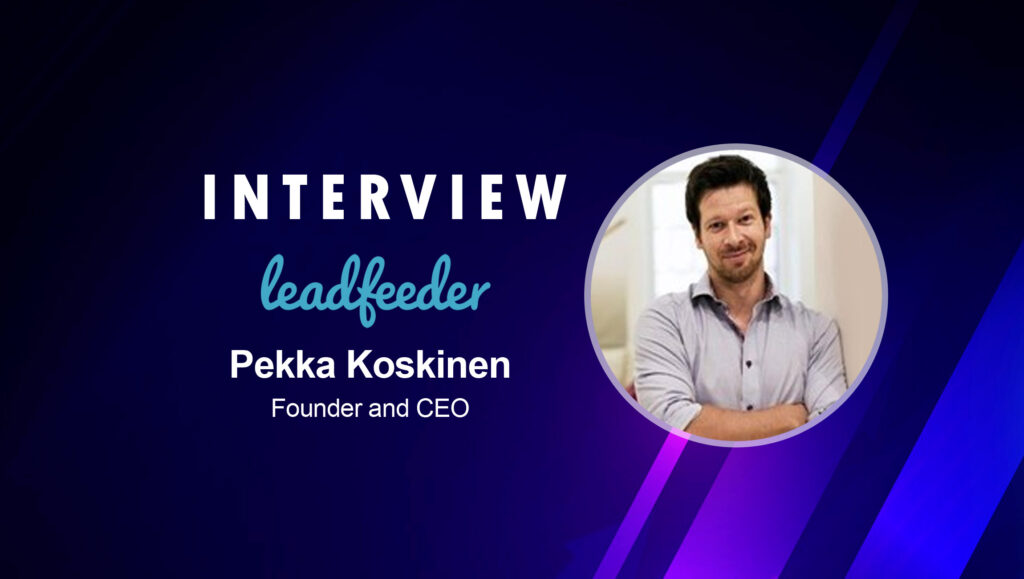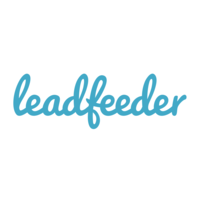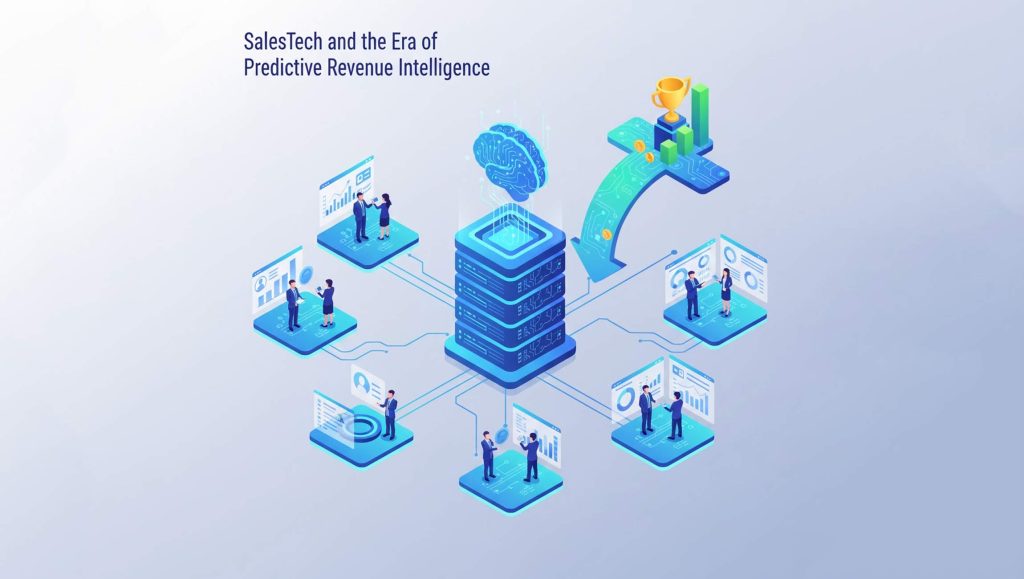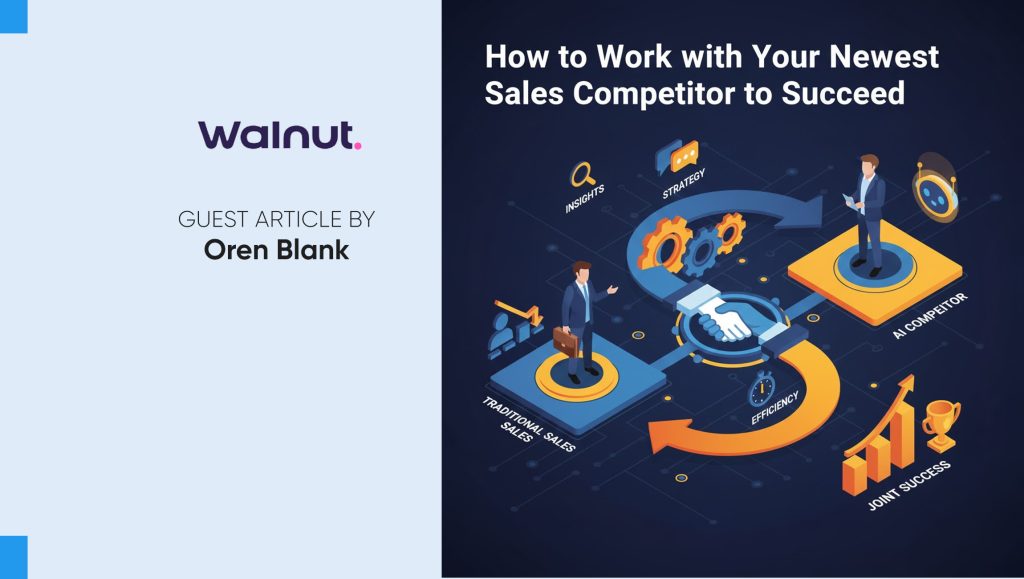Pekka Koskinen, Founder and CEO at Leadfeeder joins us for a quick chat to share a little about LeadFeeder’s inception and growth through the years while highlighting a few of the common mistakes B2B teams make in their lead generation strategies. Catch the complete QnA:
_____
Can you tell us a little about yourself Pekka and the story behind LeadFeeder?
Building software companies is what I do. Since 2002, I’ve founded five companies and made three exits.
I founded Snoobi, a Finnish web analytics company, in 2004 and sold it to Fonecta in 2012. I founded Solinor and Payment Highway selling them to Gofore Oyj and Osuuspankki in 2017-2018. Currently, I’m the founder and CEO of Leadfeeder and co-founder of Fraktio.
Read More: SalesTechStar Interview with Jaime Bettencourt, SVP of Global Account Management at Mood Media
The idea for Leadfeeder came almost 20 years ago when I was helping my dad find leads for his new business. He was getting frustrated that his website was driving a lot of traffic, which he was convinced was high quality, but without leaving their details.
I had the idea that we should look past the traditional website conversion of form fills, and start looking at the data. I knew that I could gain access to this data through Google Analytics, but trying to do so, at scale, was incredibly messy.
Essentially you would need a tool to sift through the junk and find the gold. This is when Snoobi was born.
Snoobi was one of the first full-featured web analytics tools. The extensive feature set, as well as the almost real-time nature of the tool, made us incredibly competitive against tools such as Google Analytics. Users were looking for more out of their analytics tools and were happy to pay to get the extra functionality. One of those features was recognizing the companies visiting your website. Snoobi was then subsequently sold on to Finnish telco provider, Fonecta.
Although Snoobi was focused on marketing as its core user, my original idea had always been to help sales teams sell more. Sales teams need to remain focused, eyes on the goal. Also, any good salesperson is highly receptive to prospect intel of any kind. The question was how to deliver that intel in the easiest way possible, without any noise. I decided to push forward with another venture, keeping it simple and focusing on one element; the companies visiting your website. Who they are, where they’ve come from, how long they spend, what they’ve been interacting with, their location, etc. All of that information, without the noise of ISP traffic, in one, easy-to-use tool. So in 2014, we took this information and decided to launch Leadfeeder.
We’d love to hear your observations and thoughts on the current state of tech startups (growth/demand / opportunity) globally and more specifically in Finland. Can you also share some thoughts on some of Finland’s top game-changing startups?
Now is the time to be a part of the tech startup ecosystem. It’s probably one of the most exciting times to be in a tech startup. The world is changing. And, tech startups are faced with new problems to solve. And, these problems need to be solved fast. This is forcing us to be innovative in ways we never thought possible. There are many Finnish startups that are going to change the world with their AI capabilities. Here are some of Finland’s game-changing startups: Canatu, Kiosked, ICEYE , Varjo. These companies are a reflection of Finland’s tech ecosystem and the impact of its investments in AI in education. The University of Helsinki published an AI program in 2017. It’s paying off.
A great recent example of the booming startup ecosystem is Maria01, a former hospital, now acting as a startup center/office/community. It has just gotten the green light from the City of Helsinki to expand with the aim to become the biggest startup campus in Northern Europe.
How has the Leadfeeder platform evolved over the years? What are some of the newer innovations planned for the future?
From the beginning, I knew that there was a large market for such a tool, but it was important that we got the product right. For the first year or so, we made the decision to offer the tool, completely free of charge. Funding the entire project off the capital we had raised through the sale of Snoobi. By offering something completely free, we opened the tool up to a much larger audience, whilst also setting the expectation that it was a work in progress. This approach meant that, early on, we had a large test audience using the product. We measured and tracked EVERYTHING, which gave us the data we needed to make improvements to the UX and UI, ahead of launching a paid service. We proved the value of the product first, then asked for money later. This is something we have stuck to, offering a free version of the tool for 2 weeks, and only then asking users to upgrade onto a paid plan. Albeit those early users got more of a 52-week free trial!
Our focus was to constantly improve the UX for our users. With our core user being the salesperson. The most important thing to them is knowing when their prospects visited the website, and being able to get their hands on that information in the easiest possible way. With that, we have focused on developing the product to help sales cut through the noise. They can create automations themselves to receive notifications about their prospects in the channel that suits them best (Email, Slack, CRM), at a frequency that doesn’t overwhelm them.
We also understand that sales and marketing build out a tech stack, rather than trying to solve all needs with one piece of technology. This leaves a large ecosystem of tech, with the potential of a lot of noise to sales and marketing teams. We have concentrated on an integration strategy that pulls in customer/touchpoints via various marketing tools but also communicates with your sales CRM. Giving you a clearer understanding of the entire customer journey.
Read More: IBM Named A Leader In Customer Identity And Access Management (CIAM) By Independent Research Firm
Going forward, we will double down on this integration approach. Making sure that the Leadfeeder technology fits seamlessly into marketing and sales tech stacks, whilst at the same time ensuring that sales are notified of high-intent prospects visiting their website. An example of this is the work we are doing with Pipedrive currently. Pipedrive, arguably the fastest growing CRM platform on the planet, has recently launched a lead generation toolset. One feature of which is Web Visitors. This is 100% powered by Leadfeeder and is a native add-on within the Pipedrive product. An example of Leadfeeder getting closer to the sales user, within the tools they are most familiar with.
What are some of the biggest takeaways business leaders should grab from this entire experience of working and living through a global pandemic?
First things first, most business leaders have had to completely change how they manage their teams. This has caused a big distraction. From one day to the next, employees went from being surrounded by their peers in offices to potentially being completely alone at home. On top of that, given the lockdown situation, a lot of especially younger employees had to go weeks without any physical social contact. Not only were business leaders trying to navigate a new remote landscape, but they also found themselves in a position where they needed, more than ever, to be focused on the mental wellbeing of their employees.
I think the pandemic has proven that a remote working model can be very effective, if supported correctly. It’s important to try to replicate the office environment as much as possible. I think we can all agree that face time between team members is important to create camaraderie, especially in sales teams. Being around one another helps them learn from each other’s’ failures and even better, their successes. What’s resonating with the prospect base, how others are managing to get higher connect rates, how many touchpoints it’s taking to book a meeting, etc. All of these things are easily shared within an office environment.
Creating this in a digital world has been tough, but it has been doable. At Leadfeeder, we have always had a remote working model. Of our 85 staff, approximately 65 are working remotely. Including members of our senior leadership team. To create an effective remote working model, you need to do two things: promote a remote culture internally, and provide the technology to encourage team collaboration. Both of these points play hand-in-hand. It’s quite simple, you can’t over communicate in a remote world. Ensure that staff have regular updates from leadership, and give them the opportunity to interact with members of other teams – we run a monthly all hands meeting, as well as an informal Friday catch up for the entire team. And to ensure that communication is happening, provide the toolset to enable or encourage it. You don’t need anything fancy, simply having Slack set up correctly and managed properly will already get close to where you need to be.
What are the top learnings you feel tech entrepreneurs should keep in mind from the year 2020?
It’s important to stay on your toes and pivot quickly. Humans hate change. But 2020 has forced all of us out of our comfort zone. Business models have had to adapt very quickly. This may mean changes to your ideal customer profile, your product or how you sell. All of these changes had to happen within the space of a few months, otherwise many organisations would have to face the inevitable.
We needed to make sure that we had all teams on the same page. For me, as a leader, I needed to balance giving our staff job security whilst playing close attention to the bottom line. I have always believed in sustainability in the tech space. Something which is a foreign concept to a lot of organizations. Our focus on sustainable, albeit rapid growth over the past few years left us in a very good position in early March 2020. We made a very quick decision that we would weather any potential storm by cutting program costs (mainly in marketing), not personnel costs. Furthermore, we also had a very good overview of our cash runway, running numerous scenarios – best case to worst – and communicated much of this with our workforce. This instilled confidence and trust in the leadership, and has seen us grow much stronger because of it.
When implementing lead generation tools: what are the top 5 mistakes you’d advise teams to stay clear from?
Lead generation is the lifeblood of B2B companies. But, driving traffic that converts into an SQL is a different beast.
It’s more than just the basics of forgetting a call-to-action. When lead generation is not implemented correctly, it can waste budget, resources, and time.
These are some of the common mistakes I see:
- Buying leads instead of leaning on organic. I get it. Desperation can set in when you do not see the numbers go up. But, buying lead lists can reduce your email deliverability and hurt your IP reputation. In the long-run, it’s not worth it.
- You are serving up the same content for different phases of the customer journey. Your content should nurture your leads to follow the funnel. If you’re pushing a demo to a first-time visitor, they may not be ready to buy.
- You’ve got the wrong tech stack. All of your tools should play nicely with each other. Your lead generation tools should integrate with your CRM to help you match all of the pieces to the puzzle in one area.
- You’re ignoring your top-performing pages. If you see traffic to specific pages on your site increasing, think about how you can pounce on that traffic to convert users. For example, the Contact Us page is often underutilized for conversions. People crave human-to-human contact. It’s in our nature. Give them what they want by making it more personal and delivering more conversion opportunities.
- Your forms are a storybook. Lead capture forms only represent 2% of users coming to your website. Mostly because of the forms require too much information for users to fill it out. You need to find the sweet spot on your forms to help drive higher quality leads.
Some parting thoughts you’d like to share with upcoming tech entrepreneurs?
The value of your product is only as good as the ability of your team to execute it. If you don’t have the skillset to develop your idea and turn it into a living, breathing, thing, it’s going to be a difficult road ahead.
Read More: With CallRail’s New Lead Center, SMBs Will Never Miss A Lead Again
Ensure Consistent Growth and Revenue in your Sales and Marketing catch these tips from industry leaders, featuring experts from PopIn, Zilliant, Partnerize!
Pekka Koskinen is the Founder and CEO of Leadfeeder























